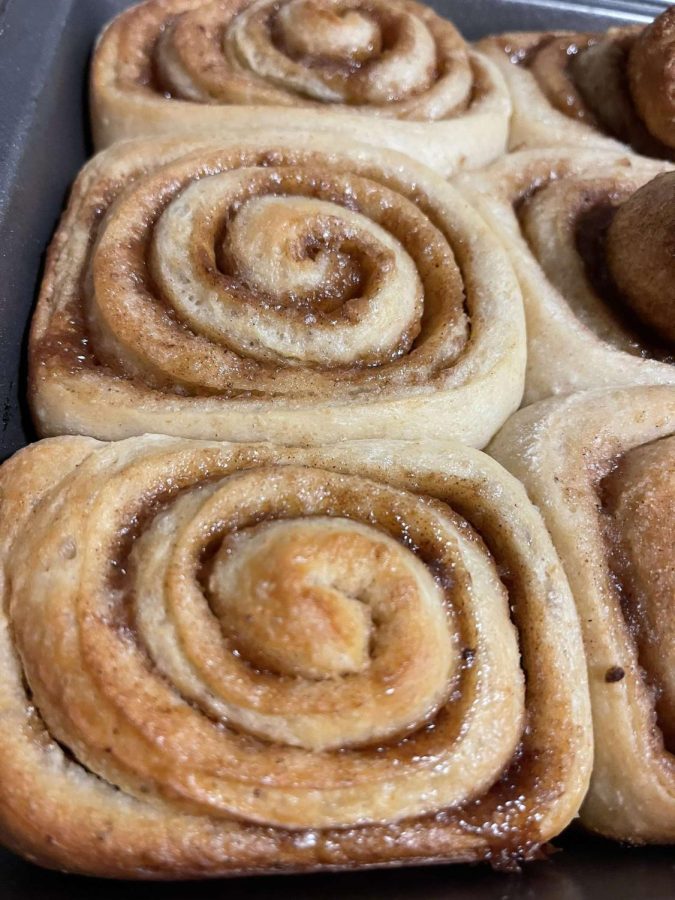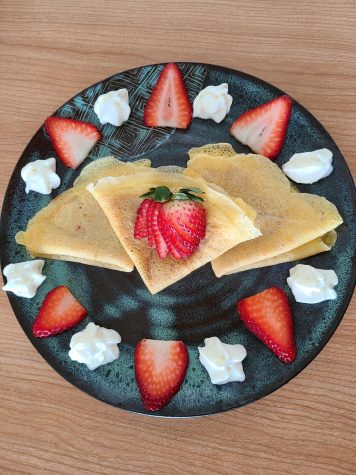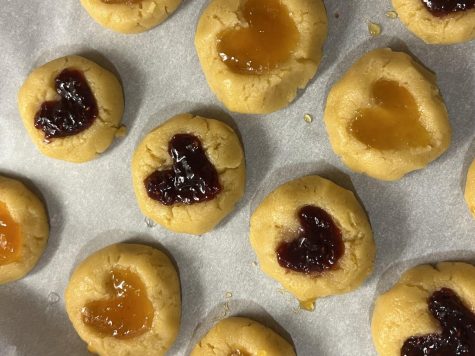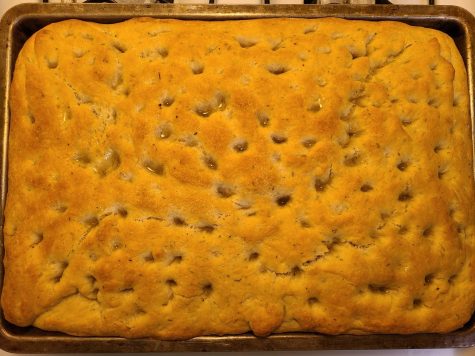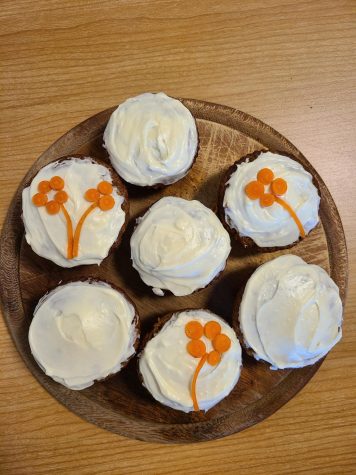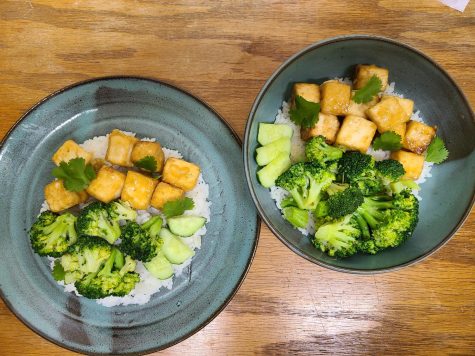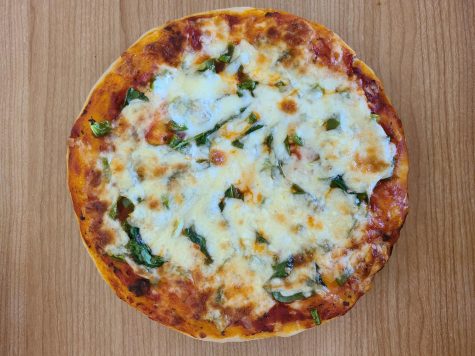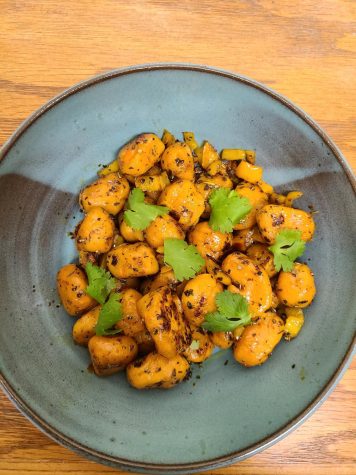Cooking with Kata — Sunday Sourdough Cinnamon Rolls
FRESH FROM THE OVEN — Cinnamon rolls straight from the oven are a luxury everyone should experience at least once this semester. Even if it’s not from this recipe that includes sourdough, look up a recipe that fits ingredients in your kitchen and make some this weekend!
January 27, 2023
I am fully aware that not many college students have, let alone want, to keep a sourdough starter alive while they have all the responsibilities of life and classes. However, I became the proud mother of a sourdough starter during the pandemic when my days were seeking more structure, and have been addicted to the process of making homemade bread ever since.
If you are not familiar with what caring for a sourdough starter requires, the basic formula requires weekly feedings (taking some of the starter out of the jar and refilling it with flour and water) to maintain the active yeast cultures in the starter. This means that once a week I have extra starter that I have to figure out what to do with.
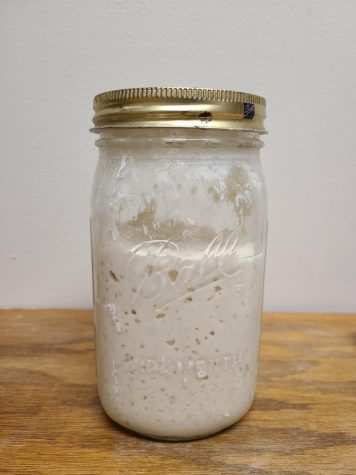
Some people will tell you this extra starter is called discard, but I personally believe that name is atrocious for a perfectly viable lump of sourdough starter that can be made into quick loaves of bread, crackers and even a brand new active sourdough starter. The only problem is you cannot make it into sourdough bread since the starter is not active after sitting in the fridge for a week. (Active starter for bread is the sourdough starter roughly four hours after being fed when the yeast is still very bubbly.)
This weekly tradition of feeding my starter means that I am faced with the exciting dilemma of what new sourdough creation to make that weekend. This past Sunday I attempted sourdough cinnamon rolls and was not disappointed — I was even told by the friends I distributed them to afterward that they were some of the best cinnamon rolls they had ever tasted.
The sourdough makes the dough super light and fluffy. It is an addition I think I will be making to every dessert I make this semester as I explore different sourdough opportunities.
Ingredients:
1 cup sourdough starter (at least seven days old)
3/4 cup oat milk
1 egg
4 tablespoons softened unsalted butter
3 1/4 cups all-purpose flour
1/4 cup sugar
1 1/2 teaspoons salt
1 teaspoon instant yeast (if your sourdough starter is not super active)
3/4 cup brown sugar
1/4 cup all-purpose flour
1 tablespoon cinnamon
1/8 teaspoon salt
1 tablespoon melted butter
Directions:
Before the official bakers come at me about using volume measurements instead of weights for the ingredients, I know it is not as exact and I am prepared to deal with the consequences. As much as I know that baking is a science, I find it infinitely more enjoyable when I take it less seriously and just throw things into the mixing bowl. (If you really care about exact measurements and fancy baking, check out the King Arthur Sourdough Cinnamon Buns recipe that this is based on.)
One of the greatest things about making bread-based recipes is the random intervals of time you get to wait in between tasks. I started this dough Sunday morning around 8 a.m. (as quietly as possible since I did not want to wake up my roommate) and mixed the flour, milk, egg, butter, sourdough starter and sugar. If you have a stand mixer, definitely use it. If not, mix with a spatula until a dough starts to form, and then knead by hand for a few minutes.
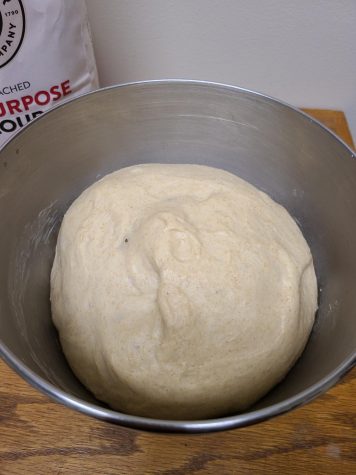
Then you have to leave the dough to rest for 20 minutes which is a great time to take a shower, get dressed and prepare for the day.
Add the salt and yeast (if you are using it) to the dough and mix it in with a stand mixer for a full three minutes, or by hand for eight to 10 minutes. The dough should be soft but not too sticky.
Put it in a wide bowl, cover it with a damp towel and let it rise for roughly four hours. I put mine in the oven (without it turned on, obviously) and then went to 231 West Patisserie for a couple of hours with a friend to study.
After my cinnamon roll timer went off, my friend and I headed back to my apartment to finish assembling the buns. She made the cinnamon filling by first melting the butter and then combining the brown sugar, flour, cinnamon and salt in the same bowl.
We rolled out the dough into a large, rectangular-oval shape and trimmed off some of the ends to eat the dough. (I do not recommend eating the raw dough — it is much better once it is baked).
The filling was a little drier than I was originally used to, so we also slathered an unhealthy layer of softened butter over the dough before sprinkling the filling over the dough. We reserved some to add on top of the buns to create a crunchy top since neither of us really likes icing on our cinnamon rolls.
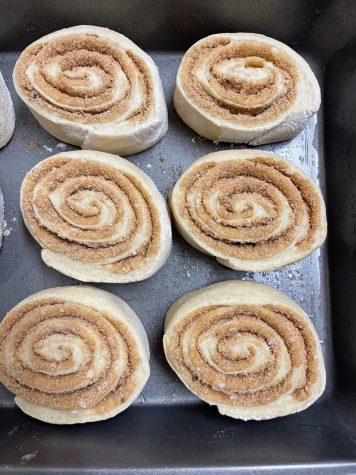
We rolled up the dough rectangle, cut it into thick rounds and set them in a pan to rise for another three hours. We placed them roughly an inch apart so as they rose, they would squish together and make a sort of cinnamon roll monkey bread.
During this three-hour break, we made sandwiches, went for a short walk and watched The Grand Budapest Hotel (which was absolutely fantastic — I highly recommend it).
Once the cinnamon rolls were deemed puffy enough, I preheated my apartment oven to roughly 400 degrees Fahrenheit (it is hard to tell the exact temperature with my oven since the numbers are falling off) and then baked them for 20 minutes. They should be somewhat golden brown and, if you have a fancy baking thermometer like me, have an internal temp of at least 190 degrees Fahrenheit.
After they had cooled for a few minutes, I brought them over to my friend’s dorm and we distributed them throughout her hall. The overwhelming consensus was that they were “amazing.” If you have not had a fresh baked cinnamon roll straight from the oven, I highly recommend you remedy that this semester.





















